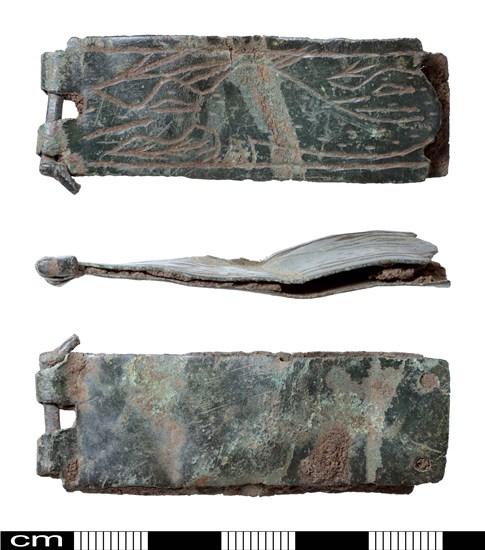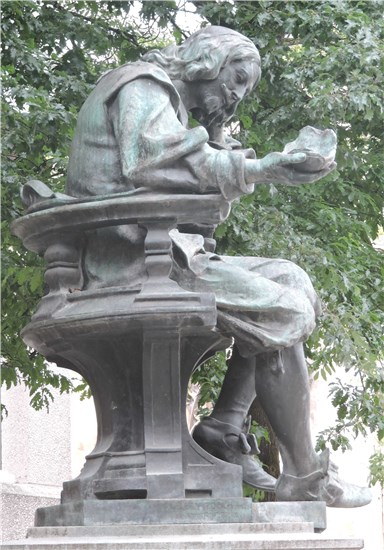Hands up if you know what a dragon looks like. So that’s everyone, then. How about a unicorn? All of you again.
But how about an amphisbaena?
Ah, thought not.
Back in medieval times, though, it would have been a very different story. Mythical animals were everywhere, from stone carvings to illuminated manuscripts. If you considered yourself an educated person, you would have known exactly what their names were and what they looked like.
A find by a detectorist north of King’s Lynn has opened up a window on one of the most obscure of mythical creatures (to our eyes, at least). The finder discovered this buckle plate – dating from circa AD 1250-1425 - with a fascinating subject depicted on it. Similar buckles often turn up with the decorative plate broken, so it’s easy to interpret this beast as a snake or a crocodile, say. But thanks to the plate being intact, we tell what it really is: an amphisbaena, a lizard-like creature with a head at each end of its body. 
NMS-AFFCBD
Ancient Greek and Roman writers were convinced that the creature existed. The most influential was Pliny the Elder, most famous these days for perishing in the AD 79 eruption of Vesuvius. But for 1500 years or more, his fame was down to his mammoth encyclopaedia Naturalis Historia (Natural History). In Chapter 25 ‘Different kinds of serpents’ he writes:
”The amphisbæna has two heads, that is to say, it has a second one at the tail, as though one mouth were too little for the discharge of all its venom” (translation by John Bostock and Henry T. Riley).
And for centuries afterwards, people believed him. It wasn’t until the 17th century that this particular tale was debunked– along with many others – by the Norwich scholar and writer Sir Thomas Browne in his Pseudodoxia Epidemica (1646) better known as ‘Vulgar Errors’. After setting out his arguments, he concludes in his typically elegant way:
“We must crave leave to doubt of this double-headed Serpent until we have the advantage to behold [it].”
Almost 400 years later, we’re still waiting

Statue of polymath Sir Thomas Browne statue in Norwich: Wikimedia Commons https://commons.wikimedia.org/wiki/Category:Thomas_Browne_statue,_Norwich#/media/File:Thomas_Browne_statue.jpg/2
Take a closer look at the buckle plate by visiting its Portable Antiquities Scheme record.